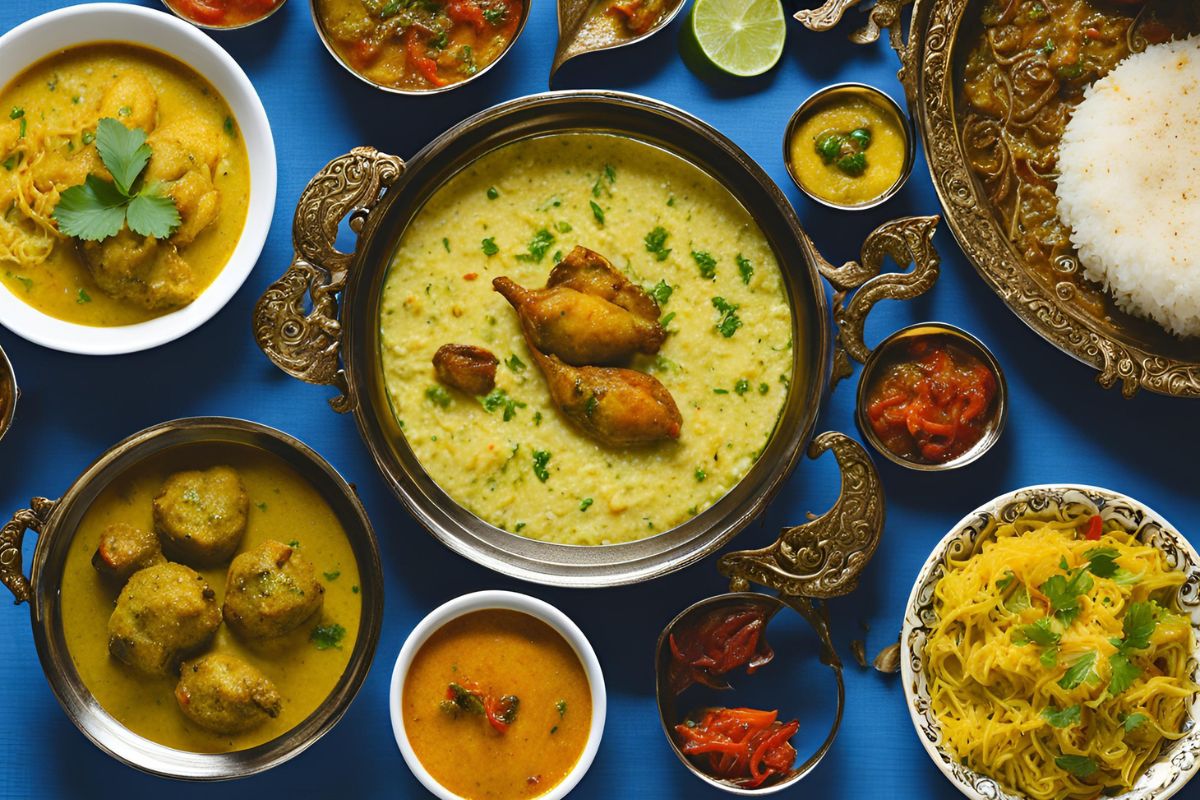


Bengali Food is distinguished by its concentration on fish, meat, and lentils, fresh ingredients, and well calibrated use of spices. The basic cuisine is rice; often complemented by a variety of side dishes that harmonise flavours, The sweets of Bengali Food are also well-known; they accompany every meal and celebration and are a main feature of each.
Table of Contents
ToggleBengali cookery is noteworthy in that it uses mustard oil, which gives food a special and strong taste. Using fenugreek, nigella, cumin, black mustard, and fennel seeds—a five-spice mix—panch phoron tempers foods. Fish is a mainstay of Bengali cooking; popular selections include Rohu, Hilsa, and Pabda. Usually presented alongside a range of lentils, vegetables, fish, and meat dishes, rice is the basis of most meals. Used liberally to increase heat and accentuate the taste of foods, green chillies
Although Bengali food is well-known for its meat and fish dishes, there is also an amazing range of vegetarian choices that highlight the region’s love of lentils and veggies.
Without including its world-famous sweets, any study of Bengali food is incomplete. Popular for their exquisite textures and sweet taste, Bengali sweets are enjoyed by many.
Bengali celebrations are incomplete without a great array of traditional cuisine. For Durga Puja, for example, special delicacies include Luchi-Alur Dom (fried flatbreads with potato curry), Khichiri (rice and lentil dish), and Labra (mixed vegetable curry) are made. The event is enhanced by festive delicacies including Narkel Naru (coconut sweet balls) and Bhapa Sandesh, steamed cheese sweet.
Affected by several civilisations and cooking techniques, Bengali cuisine has changed over time. Rich and fragrant Mughal delicacies like Biryani and Korma arrived into Bengali cooking. The idea of bakeries and confectioneries brought by the British colonial era helped to produce distinctive fusion desserts.
Bengali Food uses several strategies to improve the tastes and textures of the meals. Fish and sweets are often steamed bahapa, a common technique that guarantees they keep their wetness and delicate tastes. Another method used for meat curries is slow-cooking bhuNA, which lets the spices really permeate.
Reflecting the rich cultural legacy of West Bengal, Bengali Food is a joyful investigation of tastes, textures, and smells. Every dish, from the delicious desserts to the acidic and fiery fish curries, conveys a tale of love of food and custom. Bengali Food delivers an amazing gourmet experience regardless of your level of food adventure or expertise. Explore Bengali cuisine and taste the real flavours that make it among India’s most loved cooking styles. Good eating!

